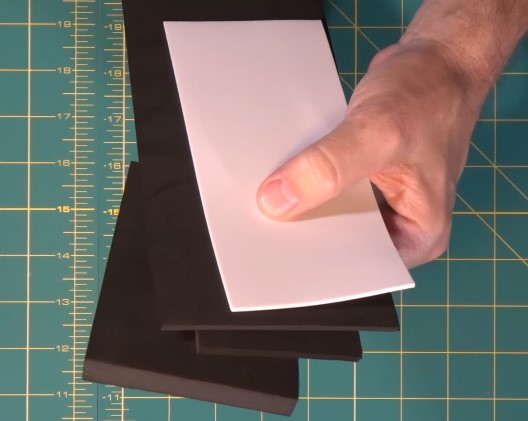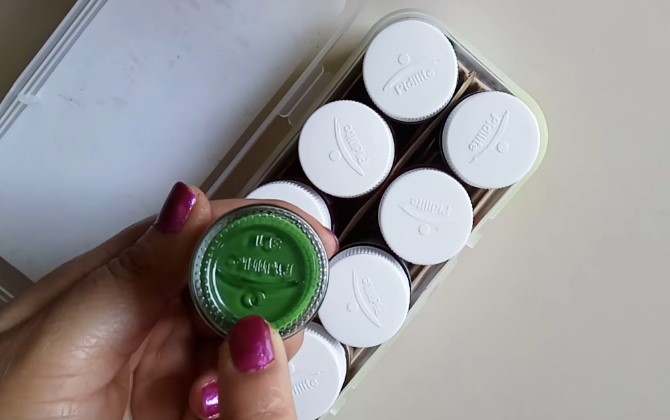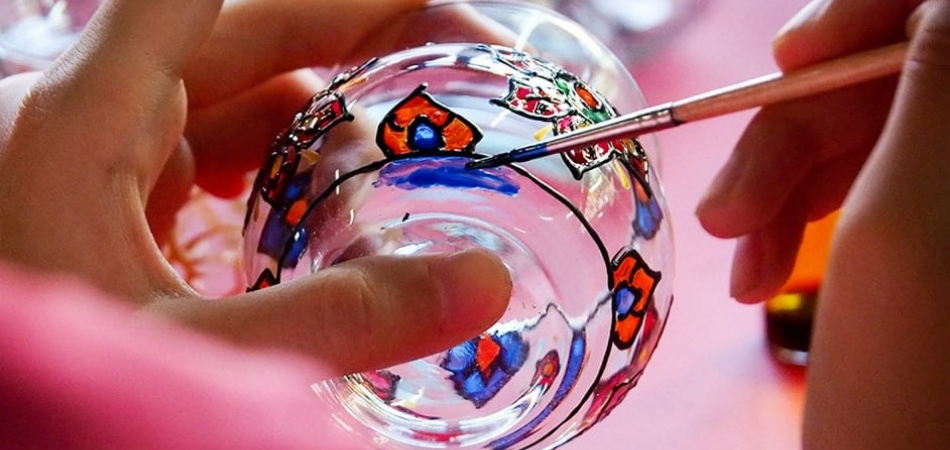Randy Charles is the owner of PaintCentric.com, a website dedicated to providing information, tips, tricks, and news about all things paint. With over 10 years...Read more
Preparing the foam before painting
Getting the Eva Foam ready is a must for a great look when you use Acrylic Paint. Before you start painting, there are a few steps to follow:
- Cleaning the surface.
- Adding a sealant and sanding it.
In this section, we will go through the steps needed for the best results when painting Eva Foam with Acrylic Paint.

Clean the surface of the Eva Foam
Before you apply acrylic paint to your Eva Foam, it’s important to clean the surface. This is to ensure the paint adheres properly and you get a smooth finish.
- Wipe down the Eva Foam with a damp cloth, removing dirt and debris. Don’t make the cloth sopping wet. Let it dry then start painting.
- If there’s residue remaining, use a mild soap and water mixture. Spread it over your working area with a cloth or soft brush, in circular motions. Rinse it with fresh water and leave it to air dry before painting.
Sand the surface of the Eva Foam
To paint Eva Foam, it needs to be prepped. Sand the surface with medium-grit sandpaper. Begin with 80-grit, then move up to 100-grit or 120-grit, based on the desired smoothness. Sand in one direction, not circularly. When the sanded surface looks right, use a foam brush to apply a thin layer of contact cement. Let it dry before painting.
Apply a primer to the Eva Foam
Before painting Eva foam, apply a primer. It acts as a sealant and helps the acrylic paint not sink into the foam. This stops the paint from flaking off later. When choosing a primer, pick one labelled for use on expanded polystyrene foam.
To get the best results, use a brush or sponge-roller and roll thin coats until you get the desired coverage. For an even finish, use light sandpaper between each layer of primer for more stickiness. Once you have the desired coverage of primer, give it time to dry before carrying on with your project.
Choosing the Right Paint

Paint is a must for any Eva foam project. However, not all paints are suited for use on Eva foam. Acrylic paint is the best option; it is water-based and formulated for fabrics and fillings like Eva foam. It is easy to apply, dries fast and can be washed off afterwards.
When choosing a paint, look for labels that say “fabric-friendly” or “multi-surface/multi-purpose”. Craft acrylics are widely available and can be bought from craft stores or online from supply retailers. To keep colors light and bright, use the lightest shades when mixing. Additionally, consider the finish of the paint when selecting; glossy for intricate designs, and matte for full coverage or large designs. Read the extra details on the paint’s packaging to get the best results without ruining your Eva foam creation.
Applying the Paint
Paint and Eva Foam? A perfect pair! To get a stunning costume or photoshoot backdrop, use quality acrylic paint. It won’t damage the Foam. Here, we’ll discuss the top methods for applying the paint. Get ready to paint your way to dazzling results!
Apply a thin layer of paint
Ready to paint? Start by working in thin layers, top to bottom. Use a small brush for detail and a larger one for bigger sections. Foam brushes help get an even spread. Don’t put on too much paint – it may clump up or run off the Eva Foam.
- Allow one coat to dry before adding a second one for better coverage and a brighter color.
- Clean any streaks between coats with a damp cloth.
- Let the painted section dry totally before starting other areas.
Allow the paint to dry
Once you’re done painting, put your eva foam aside. Let it dry in a place with good ventilation. The drying time depends on how much paint you used and the temperature. Let it dry for 24 hours. If it’s still wet, you need to let it sit longer. Once it’s totally dried, it’s ready to use or decorate.
Also Read: Best Paint for EVA Foam
Apply additional coats of paint as needed
Once you’ve applied your first coat of paint, take a look. If it’s not even, use a second coat. The paint type and color may need two or more layers for an even finish and color. For dark colors, it’s recommended to use two coats and a topcoat for extra durability.
Make sure the first coat is completely dry; usually 24 hours. If needed, sand minor imperfections before adding a new coat. Vacuum and clean the surface. When painting over an existing coat, use primer before adding a topcoat. It helps the coats adhere better and reduces brushstroke lines. After each layer is dry, look it over and decide if more coats or finishes like gloss or sealers are needed.
Finishing Touches

Eva foam and acrylic paint have a few special needs. Seal the foam to guard it and make it last. Prime and sand it for painting. Use the right type of paint and glue for the best results. Details below!
- Seal the foam to guard it and make it last.
- Prime and sand it for painting.
- Use the right type of paint and glue for the best results.
Seal the Eva Foam with a sealant
Eva foam must be cut and glued, then sealed with a quality sealant. Acrylic latex sealant is recommended for strong, waterproof protection.
Before sealing, surface must be prepared. Wipe away dirt, dust and vacuum lightly. Apply wax-based primer and let dry. Apply sealant quickly as it has short shelf life. Spread evenly with 1-2 inch paint roller. Allow 24-48 hours to dry.
Test for strength – if no indentation appears, success!
Add details with a brush
Once the Eva Foam is primed and painted, there are techniques to add more detail. Use a brush with high-quality acrylic paint designed for foam. The texture of Eva Foam is not smooth like canvas. Create texture by feathering one color into another, or adding washes or striations.
Layer colors and textures for intricate effects. Combine process-based techniques with precise details using small-scale brushes and fine-liners. Thin lines or scribbles create stark color contrasts. This type of precision work looks best on small-scale models. Choose wisely how many details you want in your project’s design!
Add accents with glitter or metallic paint
Once your project is finished, give it a special touch. Use glitter and metallic paints to make your project shine! Metallic paints come in many colors and can be used for different effects. Glitter can be used to highlight parts of the project and add texture. For example, seal a paper craft with glitter or paint the edges for an elegant finish. Glitter can also be used on fabric or wood items, like jewelry boxes and frames, to create unique designs. Your project will be unforgettable with these sparkling accents!
Frequently Asked Questions
What kind of paint is best for painting eva foam?
Acrylic paint is the best choice for painting eva foam.
Can I use a brush or sponge to paint eva foam?
Yes, you can use both brushes and sponges to paint eva foam.
How long should I let the eva foam dry after painting?
You should let the eva foam completely dry before using it, which can take anywhere from 8-24 hours.

Randy Charles is the owner of PaintCentric.com, a website dedicated to providing information, tips, tricks, and news about all things paint. With over 10 years of experience in the painting industry, Randy has become an expert in the field and is passionate about helping others learn more about painting. He has written numerous articles on the subject and is committed to providing accurate and up-to-date information to his readers.
- Latest Posts by Randy Charles
-
How Much Do You Tip Painters? The Ultimate Guide
- -
Can You Paint Over Rust Converter?
- -
Can You Paint Inside When It Is Raining?
- All Posts
